Agree, it is always more convenient to have one universal tool at hand than several specialized ones - the issue of transporting a huge amount of rarely used "junk" is immediately resolved. Instead of carrying a lot of all kinds of tools, craftsmen carry a small set of them. The most versatile tool in this regard can be called a grinder. With its help, using different disks or nozzles, you can carry out a fairly large range of various operations. The grinder is able to cut almost any material, regardless of its strength, grind, polish, sharpen, peel - in general, perform all types of work for which rotational movements can be used. It is these nozzles that will be discussed in this article, in which, together with the stroisovety.org website, we will study all the available discs for the grinder and deal with their purpose.
How to choose discs and nozzles for grinders
Cutting discs for grinders
Cutting discs are the most common interchangeable cutting tool for grinders - there are quite a lot of them and they are able to overcome almost any material. The most used among them are discs for a grinder for metal, stone, wood and a diamond wheel.
- Disc for cutting metal. It should be understood that cutting discs for grinders can differ both in their outer diameter and thickness. Everything seems to be clear with the diameter of such nozzles - in this respect they are intended for small, medium and large tools. Accordingly, their diameter can be 115, 125, 150, 180 and 230mm. As for the thickness of these discs, it can vary from 1mm to 3.2mm. Large diameter discs are made thicker, small diameter discs can be of any thickness. This approach to business is connected both with the speed of rotation of the disk, and with the expected loads on them.
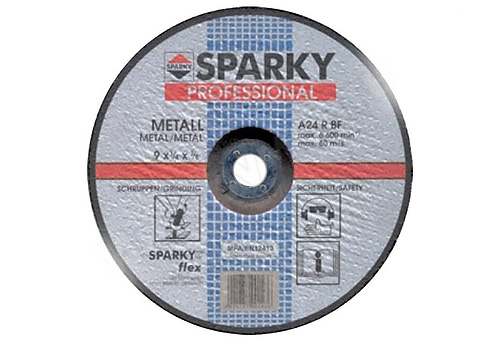
Disc grinder for metal
- Stone discs. They differ from their metal-cutting counterparts exclusively in the abrasives used.
- Wood discs. In principle, the use of such discs is fraught with unpleasant consequences in the form of all kinds of injuries - you need to work with them very carefully. Compliance with safety regulations when working with such interchangeable nozzles is in your own interest. Firstly, you should not remove the protective cover from the tool and, secondly, for a grinder it is better to use a wood disc with a fine tooth. Under no circumstances should you cut wood with a strong feed. And it is better to refuse to use such nozzles on a large instrument. The ideal option for using such a tool would be to use it in conjunction with special equipment (a device for stationary attachment of a grinder).
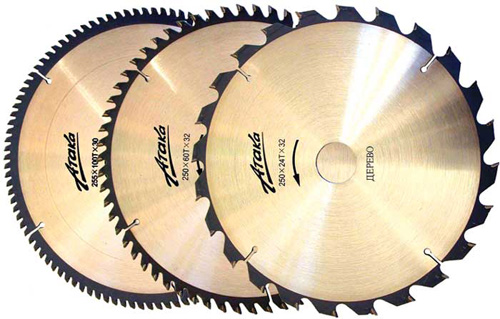
Wood discs for a grinder photo
- Diamond blade for a grinder. This nozzle can be called universal - it is able to cut almost any material, from soft to strong. Such nozzles are most widely used in the field of cutting porcelain stoneware, reinforced concrete, artificial and natural stone and tiles. For each of these materials, there are separate varieties of discs - some of them have a solid cutting edge, and some are torn with slots. Also, depending on the purpose of these circles, they can have a large or small fraction of diamond coating. For example, discs for a grinder on concrete have a fine coating and special transverse recesses along their entire diameter. In contrast, a diamond blade for a stone grinder has a solid cutting edge.
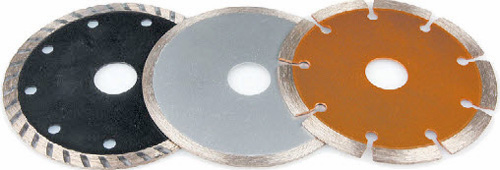
Diamond blade for grinder photo
Visually, the purpose of diamond discs is difficult to determine, therefore, when purchasing such nozzles, carefully read the packaging - everything is written in detail about its purpose.
Grinding and polishing discs for grinders
There are a lot of varieties of grinding and polishing wheels - depending on the required surface quality, discs with replaceable sandpaper, and felt, and spongy, and even cloth.
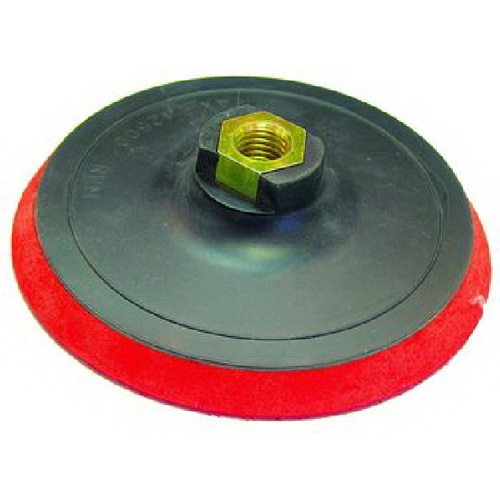
Grinding disc for grinder photo
Most of them require the use of special fine abrasive pastes or even liquids to work. Fine grinding wheels are used for rough grinding and cleaning. Grinding discs for grinders allow you to bring almost any material to the required roughness - such nozzles are used even in auto repair shops for polishing car bodies.
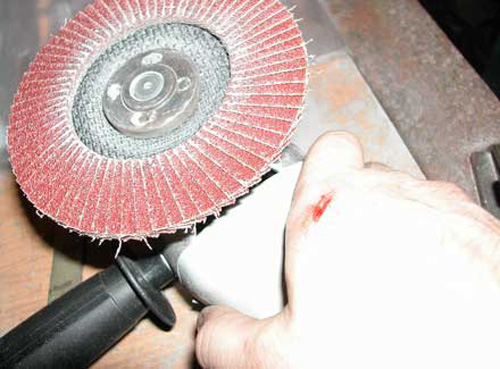
Petal disc for grinder
Disks for sharpening tools and peeling nozzles for grinders
Among this type of devices, in order to expand the functionality of the grinder, three types stand out significantly - twisted cutters, abrasive sharpening discs and diamond peeling.
- Twisted cutters are used for peeling metal and stone surfaces - when it comes to removing old paint or thoroughly dried cement mortar, then you can hardly find a better replacement tool. It is made in the form of steel cups, along the perimeter of which wire brushes are installed. The size of the wire can be different - depending on the roughness of processing, the cone can be equipped with both thick and thin wire.
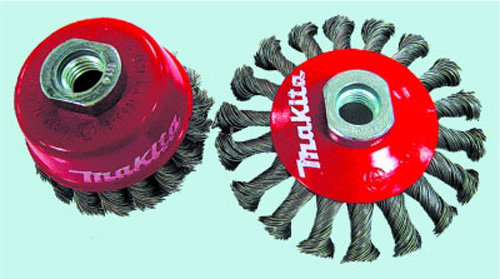
Peeling nozzles for a grinder photo
- Abrasive grinding discs. Such nozzles are designed for rough metal processing - they are used to clean welds and sharpen all kinds of cutting tools. As a rule, such nozzles are most widely used on small angle grinders - this is due to ease of use. From cutting wheels such a nozzle can be distinguished by its thickness and shape - their inner part has a recess, which allows the sharpening process to be carried out with the flat part of the circle, and the thickness cannot be less than 5 mm.

Sharpening discs for a grinder photo
- Diamond grinding discs. In principle, they are somewhat similar to abrasive grinding. Only in contrast to them, processing with a diamond tool of this type can only be performed by the periphery of the disk, on which the cutting edges are placed. In contrast to its grinding counterpart, a rough diamond is not designed to work with metals, its strong point is the roughing of concrete, stone and similar materials. If we are talking about removing a small section of cement screed, then you won’t be able to come up with anything better than this diamond.
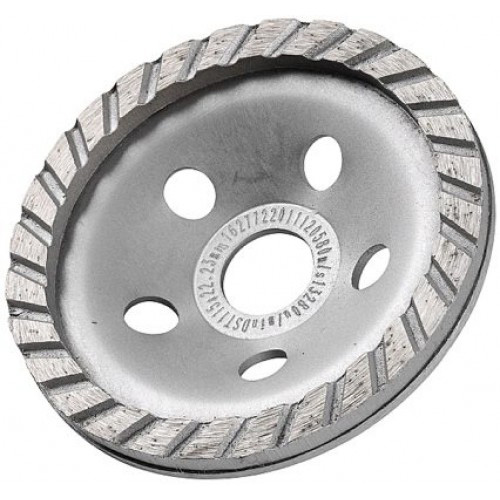
Discs for a grinder photo
In general, one way or another, and grinder discs can significantly increase the functionality of an angle grinder. In modern construction and other areas of life, it is very difficult to find any industry where the grinder is not used - together with a huge number of various nozzles, it is a truly universal tool.
When working with metal, a grinder is often used. And its effectiveness directly depends on the circle that is used. So how to choose a cutting disc for metal to get the best quality? As examples, circles with the most popular "household" diameter of 125 mm will be compared.
Choose the thickness
It should be noted that if we talk about cutting discs for metal, dimensions play an important role. So, too large a circle diameter will not allow it to be used in a grinder. But there is another parameter that is responsible for the comfort of work, this is the thickness. The simplest and most effective in terms of cutting are usually 1 and 1.2 mm discs. And they are quite popular. But why is that? The fact is that thin discs are more elastic than their "thick" counterparts. Due to the possibility of a small bend, small operator errors and shaft runout are leveled. Also, when the disk breaks (which is rather difficult to achieve), the mass and kinetic energy of the flying fragments will be relatively small. In addition, due to the complexity of their production, the likelihood of meeting a fake from China is very small. Therefore, cutting discs for metal 125 mm with a thickness of 1 mm were chosen as an object, as they are popular in everyday life and difficult to fake.
Test results
But a decision on the choice of a particular model can only be made by comparing their effectiveness in practice. Therefore, I bring to your attention the results of experiments, where several popular representatives will be considered. The test task was cutting steel bars in the amount of 50 pieces with a diameter of 10 millimeters. The PoggiPosqualino machine was used for testing uniformity. It was also accelerated to 150 m / s (with a declared figure of 80 meters) to test the tear resistance on the device of the same company.
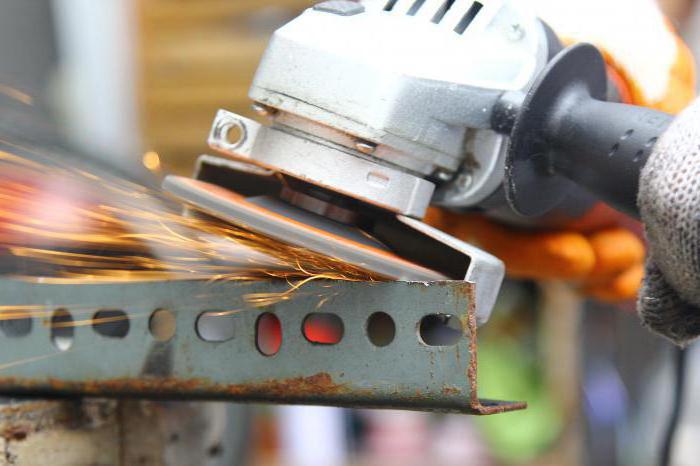
Hitachi PowerTools
It is produced by the Luga Abrasive Plant, but is considered a partner product of Japan. They are marked without violating the rules, indicating the purpose of the disk and its compliance with GOST. According to the test results, it was found that its diameter decreased by 8 millimeters, and the efficiency factor was 5.75. Also, this drive has successfully passed the speed test. According to the final result, we can say that the effectiveness of this circle is the highest among the options considered in the article, and in terms of quality / price ratio, it takes an honorable second place. Also, I have not heard that this cutting disc for metal was forged, so for certainty you can purchase this particular unit of production.

Luga Abrasive Extra
Also products of the Luga Abrasive Plant. Moreover, it is one of the most recognizable brands even on a global scale. In terms of cutting efficiency, this representative is inferior to the previous one, but due to its low price, it can be awarded first place in the overall standings. They also passed the speed test. But it should be noted that many notice quick erasure and various side effects when using. But this is not true for all products, despite the fact that official products pass all tests. The speed of work and, accordingly, the wear of the circle are also noted. Therefore, there are suggestions that these discs, despite their cheapness, China still learned to fake.
Kronenflex A 60 Extra
Often this model is called the favorite of the price / quality ratio. But, according to some information, this is not true. As a result of testing, the disk lost 13 millimeters in diameter. The final efficiency ratio is 2.35. At speeds greater than this model is not recommended.
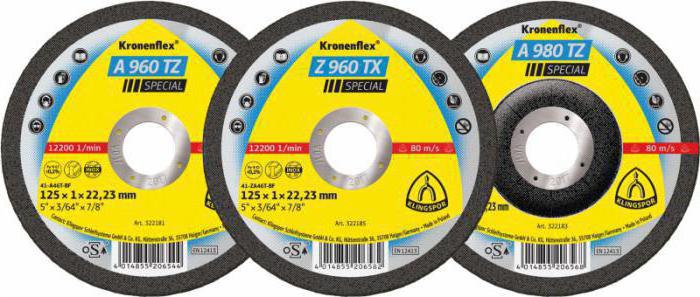
"Interskol"
It is a product of the Chinese company of the same name. According to the results of testing, the final diameter of the disk decreased by 16 millimeters. It should be noted that there is no safety marking and compliance with GOST, the necessary designations and the date of manufacture. True, there is an old Soviet marking, which, however, does not correspond to reality. Also, the number of revolutions per minute is 50 units less than required by the standards. Despite a number of suspicious moments, the drive has successfully passed the speed test. But the overall efficiency ratio was a little over two. Despite the absence of heights in the characteristic, we can say that the wear is low, and the cut is even.
ZUBR "Expert"
After testing, the disc diameter decreased by 17 millimeters, and the cutting efficiency ratio was 1.81. During the verification of its properties, it turned out that the circle cuts into metal relatively poorly. It is also possible to observe the excess of the thickness by 1.5 times the specified size. Also, compliance with GOST and the manufacturer are not indicated. But the test for speed, despite a number of complaints, this cutting disc for metal was very successful.
Rhodius ALPHA line
After use, the disc diameter has decreased by 19 millimeters. Initially, this German product makes a positive impression: there are no complaints about the labeling, the copy itself feels like a high-quality product to the touch. But, as practice has shown, it has significant wear. Compliance with GOST and a successful speed test allow you to give positive feedback, but the high price still forces you to put a rather low overall utility factor - 1.61. Therefore, despite the high-quality cut, the use of this disc is rather inefficient.
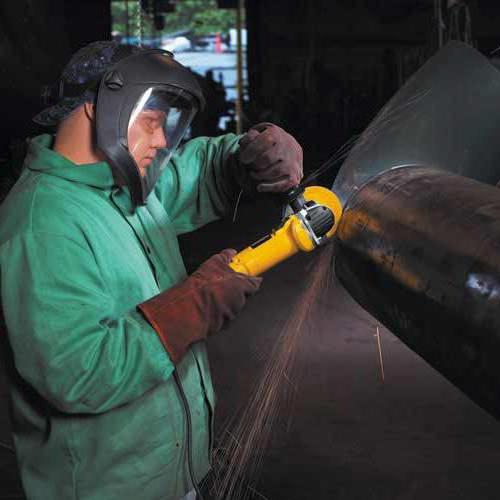
Conclusion
On the Russian market there are still quite a few products, however, mainly of Chinese origin (it is often labeled as goods of European origin), which showed not very high quality. One of the circles - Orientcraft Professional could even wear out after the 41st steel rod. But in the end, which one is better to choose a cutting disc for metal, focusing on price / quality, it’s up to you to choose. And the task of this article is to provide information on the basis of which conclusions will be drawn about in favor of which unit of production it is still necessary to make your choice.
For many people who have just bought a grinder, there is a problem of choosing cutting wheels. Angle grinder is a multifunctional tool, it can perform various types of work, respectively, and all kinds of circles and nozzles on it are dark and dark. Let's figure out what kind of work can be done with the help of a grinder and what nozzle disks are used for this. This article will focus on cut-off wheels.
Of course, most often the grinder is used when you need to cut something off, 70 percent of the work is cutting work. You can cut anything with a machine, from metal to various tiles and even wood. Of course, using an angle grinder, carefully read the instructions, since many household models are not designed for sawing, for example, stone, since sawing dust clogs the grinder mechanism and it fails. In particular, Sturm models, in the passport of which it is written in black and white that they should not be used for sawing stone. Therefore, when choosing a grinder, ask if it is possible for her to cut a stone. Indeed, very often at home work it is necessary to cut ceramic tiles or cut off a piece of brick. So, what cutting wheels are.
For metal.
Sawing metal is the main use of the grinder. There are many types of cutting wheels for metal. Most often, the circles of the Luga plant are used, although they are so-so in quality, they are quickly erased and a lot of dust is released during sawing. But their price is low, so they are used very often. The plant also produces an improved version of these wheels under license from Hitachi, such wheels are 10-15 percent more expensive, but the quality is noticeably better. If a circle of sizes 230 mm usually costs 38 rubles, then the same Khitachevsky costs 45 rubles. In appearance, the Hitachi circle is not to be confused with the usual one, it is all bright green.
The main sizes of circles for metal for grinders:
Inner hole 22.2mm
External diameter: 115, 125, 150, 180 and 230 mm.
As you guessed, disks with a diameter of 115 and 125 mm are used on small angle grinders, 150 and 180 on medium ones, 230 mm are disks for a large angle grinder (power from 1500 watts and above).
By stone.

Stone circles are used for sawing bricks, concrete, slate, ceramic tiles, paving stones.
Dicks for stone are diamond and "dry cutters", the price difference between them is high.
An ordinary stone disc (Luga abrasive, Bosch) - looks the same as a metal disc, only it is written on it that it is for stone. These discs cost much less than diamond discs, but they wear out faster. You can use it on white (silicate) brick, paving stones, slate. They can no longer take concrete, as well as tiles, for cutting which a diamond blade is simply needed. Note that the Bosch stone circle costs about 100 rubles, meadows - 40 rubles, the difference between them is noticeable.
Diamond wheels are divided into 3 types: for dry cutting, for wet and combined. Such disks are made of iron, with a diamond layer applied around the circumference.
For dry cutting (segmented).
It is divided into segments along the entire circumference, thanks to which there is a much better cooling of the circle. Of course, you know that when sawing stone, the cutting blade gets very hot, so it is necessary that it cools down. By the way, you can cut with a diamond disc for no more than 2 minutes continuously, so the diamonds will not fail. In such a circle they saw red brick, white silicate, paving stones. The main purpose is sawing concrete. Of course, they can also cut tiles, but it is better to use a wet cutting blade for it.
Wet cutting disc.
A solid diamond wheel, the cooling of the circle is carried out with water. Most often they are used on special tile cutters - electric machines with water supply. They saw ceramic tiles and porcelain tiles. For the grinder, there are also such circles, they cut tiles with them, which are pre-moistened with water.
Dimensions for grinders - inner diameter (landing) 22 mm
For tile cutters - fit 2 types, 22 mm and 25.4 mm.
Cutting diamond combined wheel dry / wet - Turbo series.
Universal diamond wheel with which you can cut any stone. It proved to be excellent when sawing tiles “dry”, cuts brick, concrete and other stone like clockwork. Cooling is due to the wave-like structure of the disk.
Manufacturers
Let's figure out which diamond wheels are better, because it often happens that you bought a wheel and hope that it will last for a long time, but after a short period of time it no longer cuts. Discs, just like power tools, are professional and household.
Drives are inexpensive, for the home
You need to saw off a piece of brick or cut off a couple of tiles - for this, discs for domestic use. Good variants of the company "Zubr", "Sparta", "Centroinstrument". Their diamond quality is not bad, if you use such a circle infrequently, for domestic purposes, then it will last for a long time. The most important thing is to use the diamond correctly, namely, you can’t saw metal, you can’t work continuously for a long time. If the circle does not cut, it is necessary to “open” the diamonds by making several cuts on fireclay (yellow) or red bricks. The price for a diameter of 230 mm is around 500 rubles, 115-125 mm - 150-200 rubles.
Professional circles
If you have a production, even a small one, household discs will not last long, so you need to think about purchasing a professional tool. The price for them is high, about 3-4 times higher than for household ones. However, the durability is impressive. I remember that when I was working as an engraver-stonemason, we sawed granite all season in one circle, every day. And he endured. There was that circle of the DISTAR company - the coolest, in my opinion, professional diamond discs. Therefore, if you have a production, you are engaged in laying tiles, paving stones and sawing stone every day, then it is difficult to find a better choice than Distar discs. I definitely recommend.
The approximate cost of such a circle of 230 mm is around 2500 rubles. I note that they have a clear gradation of discs - there are purely for marble, porcelain stoneware, ceramic tiles, refractory, for concrete,. So everyone will find a disc specifically for his work. And this is very important, because if you use the disk for its intended purpose, then its service life is significantly extended. Well, the sizes of discs from Distar are just super - ranging from 115 mm for a small angle grinder to large circles for machine tools and wall chasers - sizes 350 and 400 mm.
Also, as an alternative, you can try Bosch circles, they are also praised.
I think my review will help you choose the right diamond cut for your needs, and the recommendations will extend the life of the wheel. Good luck with your cut))
